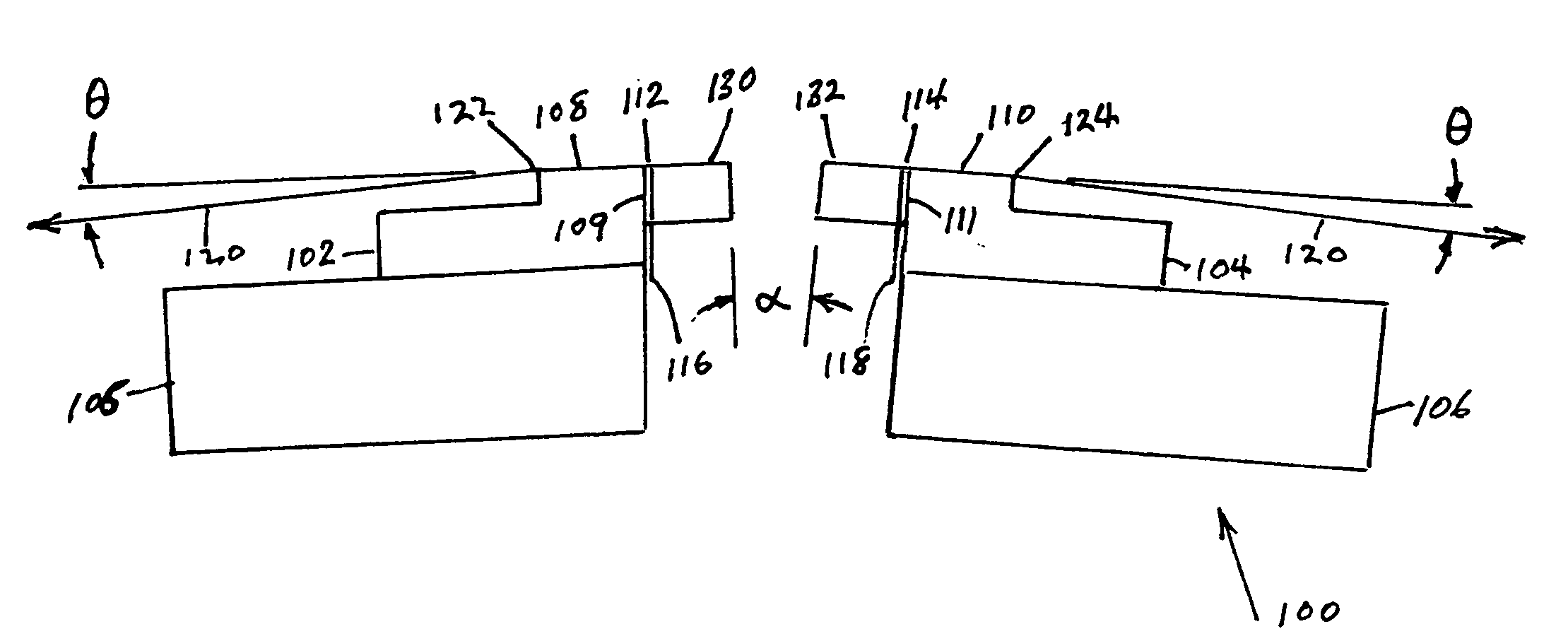Filled-gap magnetic recording head and method of making
a filling gap and magnetic recording technology, applied in the field of magnetic tape recording heads, can solve the problems of increasing the spacing loss of readback signals, corrosion of giant magnetoresistive (gmr) or magnetic tunnel junction (mtj) sensors when exposed directly to running tape, and achieve the effect of reducing the thickness of the insulation layer
- Summary
- Abstract
- Description
- Claims
- Application Information
AI Technical Summary
Benefits of technology
Problems solved by technology
Method used
Image
Examples
Embodiment Construction
[0025]FIG. 1 illustrates a bi-directional read-while-write flat contour head 100 using the present invention. Rowbar substrates 102 and 104 of a wear resistant material, such as the substrate ceramic typically used in magnetic disk drive heads, are mounted in carriers 105 and 106 fixed at a small angle α with respect to each other. The ceramic rowbar substrates 102 and 104 are provided with flat tape support surfaces 108 and 110 and gap surfaces 109 and 111 and a row of transducers at the surfaces of gap regions 112 and 114. Electrical connection cables 116 and 118 connect the transducers to the read / write channel of the associated tape drive. The wrap angle θ of the tape 120 at edges 122 and 124 going onto the flat tape support surfaces 108 and 110, respectively, and angle α / 2 are usually between ⅛ degree and 4.5 degrees. The rows of transducers are protected by closures 130 and 132 made of the same or similar ceramic as the rowbar substrates 102 and 104.
[0026]FIG. 2 is a perspect...
PUM
 Login to View More
Login to View More Abstract
Description
Claims
Application Information
 Login to View More
Login to View More - R&D
- Intellectual Property
- Life Sciences
- Materials
- Tech Scout
- Unparalleled Data Quality
- Higher Quality Content
- 60% Fewer Hallucinations
Browse by: Latest US Patents, China's latest patents, Technical Efficacy Thesaurus, Application Domain, Technology Topic, Popular Technical Reports.
© 2025 PatSnap. All rights reserved.Legal|Privacy policy|Modern Slavery Act Transparency Statement|Sitemap|About US| Contact US: help@patsnap.com



